Contact
Department of Wildlife, Fish and Environmental Studies
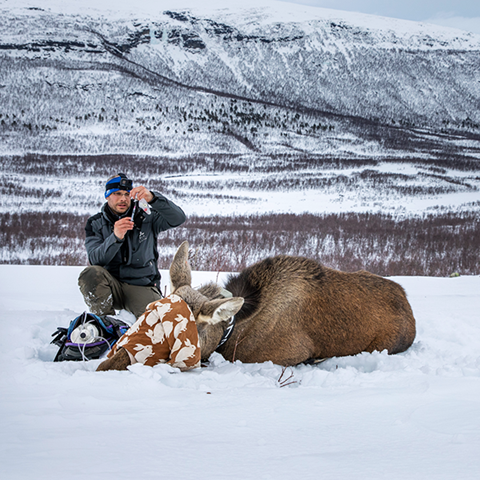
Within the competence area animal ecology, we study the ecology of mammals and birds, wildlife in short, and the diverse ways they shape ecosystems and societies. We work with societal stakeholders across the world to translate our findings into nature-based opportunities for a more sustainable future.
Across large parts of the world, wildlife populations are either strongly declining or strongly increasing. These large changes in wildlife populations affect ecosystems and human societies because wildlife play a critical role in shaping the earth system.
Within our competence area, we study the drivers of changing wildlife populations, with a focus on terrestrial mammals and birds, and the consequences of these changes for the functioning of ecosystems and human societies. Our work spans across fields from animal behaviour to ecosystems and earth system ecology, as well as human-wildlife interactions. We actively work with diverse societal stakeholders across the world to develop nature-based opportunities for our biggest sustainability challenges, striving for synergies between biodiversity restoration, climate action and equitable human well-being. Through collaborating with other scientific disciplines and societal stakeholders, our work has a strong inter- and transdisciplinary focus.
Our scientific approaches span from long-term observational studies to experimental field work and the use of remote sensing and smart technologies to big data from e.g., national-scale citizen science initiatives. Our results support knowledge-based decisions in management of natural resources and conservation, in line with societies’ environmental objectives and sustainability goals.
Our research is centred around five interconnected subthemes:
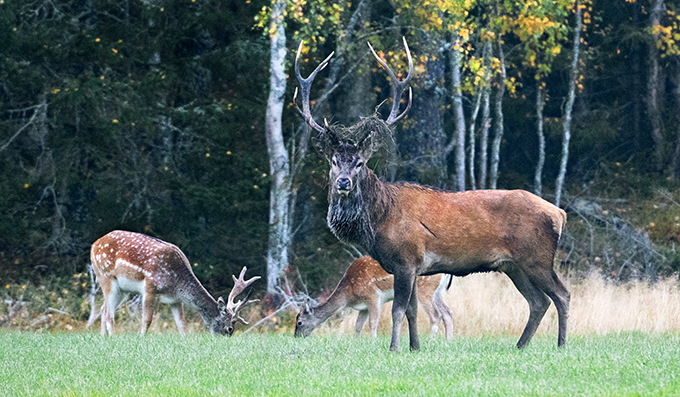
Red deer and fallow deer forage at a forest edge. Photo: Jörgen Wiklund
Forest ecosystems provide a multitude of ecosystem goods and services, such as timber, game meat, recreational value, and carbon fixation. In many cases, wildlife structures these ecosystems and influences the delivery of their benefits. For example, the browsing pressure of herbivores may increase variation in habitats at different spatial and temporal scales, with associated effects on biodiversity. Simultaneously, browsing may limit both forestry and carbon fixation. Many goods and services limit one another and successful co-management of wildlife and forests rests on finding trade-offs between competing interests. Additionally, ecosystem services usually are co-produced through some form of investment, for example in conservation, wildlife management or forestry.
Research within this subtheme focuses on providing knowledge on wildlife-wildlife interactions, the structuring effects of wildlife on forest ecosystems and associated biodiversity, and on interactions between forestry and wildlife under changing environmental conditions. Within this theme, we focus on Scandinavian boreal and hemi-boreal forests and strongly collaborate with local forest and wildlife-related stakeholders (e.g., forestry companies, wildlife management organizations).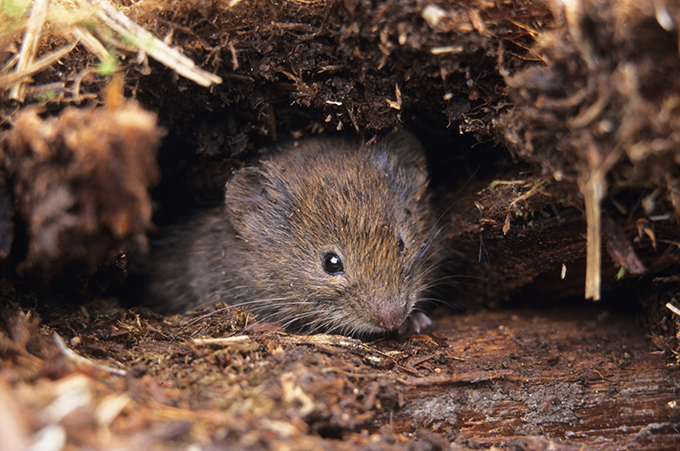
Bank voles can spread Puumala hantavirus which causes the disease Neophropathia Epidemica. Photo: Jörgen Wiklund
Human health is tightly linked to ecosystem health, thus by integrating One Health principles, we can protect human (and animal) wellbeing, preserve biodiversity, and promote conservation efforts for a healthier planet.
Within this subtheme, we focus on nature-based solutions to public health challenges in a wide range of environments and habitats, including forests, wetlands, and urban areas in Fennoscandia, East Africa, and Latin America. By leveraging our long-term studies of ecosystem functions such as competition, predator-prey interactions, and the interaction between pathogens and the environment, we work with local communities and local and national stakeholders to implement nature-based and public health interventions and evaluate their effectiveness in reducing the risk of infectious diseases. We strive to maximise local participation so that the interventions are acceptable, sustainable, and contributing to overall uplifting in quality of life rather than only decreasing disease burden, especially in low-medium income countries.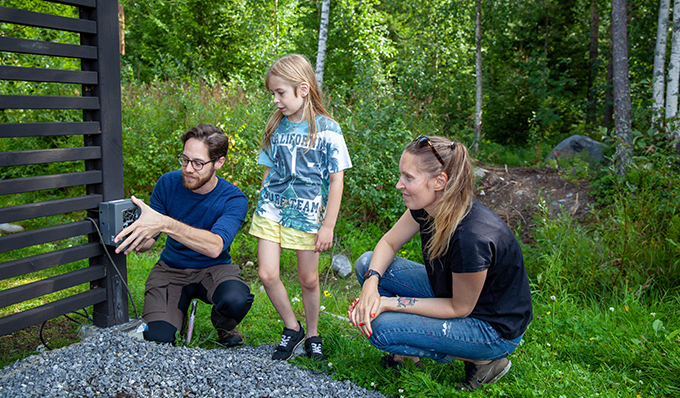
In the citizen science project Meet Your Wild Neighbours the public could borrow wildlife cameras for their gardens. SLU researcher Tim Hofmeester helps setting up the camera. Photo: Susanna Bergström
To study and manage wildlife, we need to know what species and how many individuals of each species occur in an area and how they affect the systems they live in. The novel field of conservation technology is rapidly developing and holds great opportunity for not only monitoring wildlife but also promoting human-wildlife coexistence.
Within this subtheme, we develop, test and implement diverse wildlife monitoring methods in an extensive range of systems, from the Swedish mountains to the rainforest of Madagascar. We develop and apply advanced statistical methods to improve our estimates of species occurrence and density, how these species utilize resources, and their impacts on ecosystems. We use a broad range of sensors such as bio-loggers, drones, acoustic sensors, and camera traps to monitor individuals, populations, and communities. As a growing hub in conservation technology, we are increasingly using artificial intelligence to deal with the large amount of data that all these sensors accumulate.
We use this knowledge to feed into implementing the conservation and mitigation hierarchy and identifying future investments and priorities for biodiversity. We produce knowledge on all such aspects to help societal stakeholders and policymakers in making better decisions.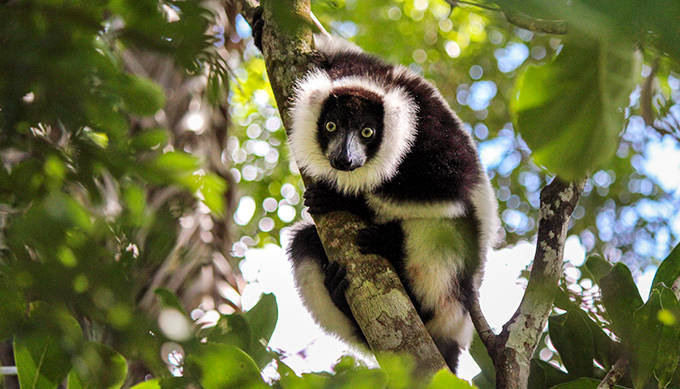 Most of Madagascar's lemurs are endangered. Pictured is a black-and-white ruffed lemur (Varecia variegata). Photo: Sheila Holmes
Most of Madagascar's lemurs are endangered. Pictured is a black-and-white ruffed lemur (Varecia variegata). Photo: Sheila Holmes
Climate change, biodiversity loss and land use change are major, interlinked, drivers of global change that threaten the future of ecosystems and the human societies depending on them. Rewilding, the restoration of wildlife populations and their functional ecological roles, is increasingly presented as a win-win opportunity that can restore biodiversity, mitigate climate change and promote human well-being.
In this subtheme, we critically analyse rewilding and its potential effects on biodiversity, climate drivers and human well-being. Our focus is global and ranges from the savannas and grasslands of southern Africa, the rainforests of Madagascar, to human-dominated systems in Europe. Together with partners in these regions, we investigate patterns and drivers of wildlife loss and recovery, including active and passive rewilding, and the role of climate and land use change. We simultaneously evaluate rewilding as climate action and biodiversity restoration opportunity through studying how rewilding, but also the loss of wildlife, affects essential earth system processes such as the carbon cycle and albedo, fire, biogeochemistry, and biodiversity.
Moreover, with collaborators from other disciplines we look at how rewilding affects human well-being. With local partners, we use our findings to co-create nature-based opportunities that restore wildlife while simultaneously tackling global sustainability challenges.
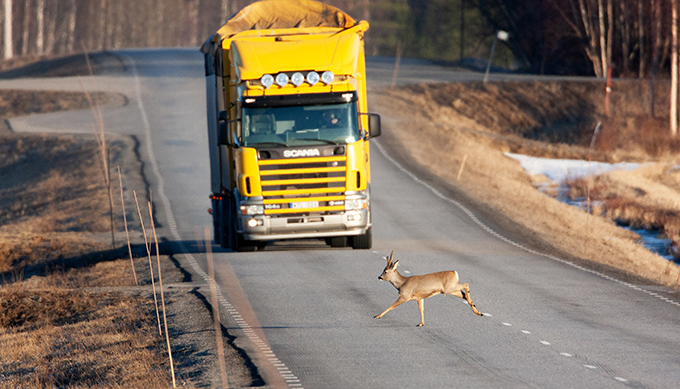
Wherever there are people, there are encounters between animals and humans. Photo: Jörgen Wiklund
Humans now inhabit most parts of the world and often in significant numbers. In all these places, humans interact with the wildlife around them, consciously but also often subconsciously. These human-wildlife interactions affect the well-being of humans and wildlife in diverse ways at the scale of individuals to communities and societies.
Through this subtheme, we aim to increase our understanding of human-wildlife interactions to co-create opportunities for increased human-wildlife coexistence with societal partners. The work ranges from conservation challenges, where we study highly threatened species and their human threats, to the consequences of successful conservation leading to increasing conflicts with thriving wildlife populations. We do this throughout the world, from Sweden’s boreal taiga forests to the rain forests of Madagascar, and from Africa’s grassy biomes to the steppes of central Asia. We have a very interdisciplinary approach towards studying human-wildlife interactions, where ecologists in the competence area collaborate with political scientists, communication scientists and philosophers.